As it turns out, there is no inopportune time for Champagne. Although the bubbly beverage has built its brand on being the drink of choice for special occasions and other times of celebration, it turns out that it’s equally nice to kick back with a glass of fine bubbles on an otherwise-normal Thursday afternoon. It’s even better to kick back with six of them, which is what I was fortunate enough to do when Moet & Chandon winemaker Amine Ghanem came to town to lead an attentive and appreciative group through a good portion of the Champagne powerhouse’s portfolio.
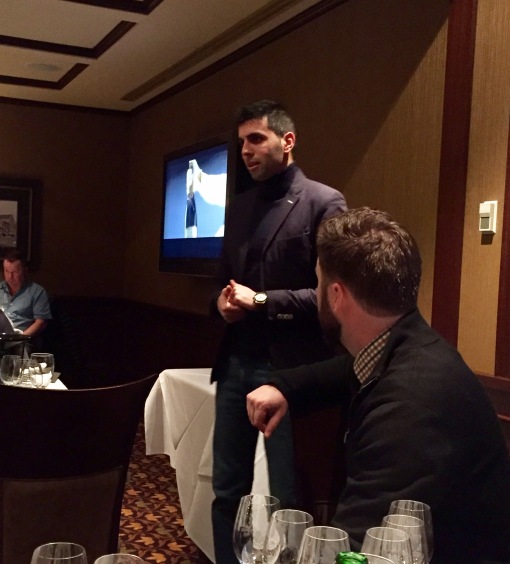
Amine Ghanem, Moet & Chandon.
Ghanem is one of 10 winemakers employed by Moet & Chandon in addition to their cellarmaster, or chef de cave, who directs and decides on the ultimate blend for each of the house’s Champagnes. Moet has been doing its thing for centuries (since 1743, to be exact – Ghanem informed us that the very first bottle of Moet & Chandon Champagne arrived in Canada in 1839, before we were even a country!), and as such has honed its house style to a fine point, with very clear goals as to the characteristics it seeks to draw out in its Champagnes and specific strategies in place to reach them. The three pillars of the Moet & Chandon style are, in Ghanem’s words: (1) “bright fruitiness”, which is attained in part by careful non-oxidative winemaking techniques, even to the point where the house has developed a technique for “jetting” oxygen out of the neck of the bottle after disgorgment to avoid degradation during the maturation process; (2) “seductive palate”, with a welcoming, easy-to-drink texture aided by full malolactic fermentation; and (3) “elegant maturity”, achieved largely through extended lees contact pre-disgorgment, for much longer periods than required by law. These foundational principles must be working, as we were told that there is currently a bottle of Moet being popped somewhere around the world every second.
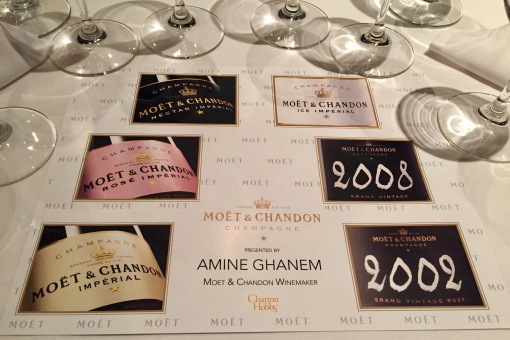
In case the ten full-time winemakers on staff wasn’t a tip-off, Moet & Chandon is a massive undertaking. It is the biggest house in Champagne and the owner of its largest vineyard holdings, amounting to almost 10% of the entire area under vine in the region. Since 1962, it has even had its own brand of proprietary yeast, which helps accentuate the characteristics that reflect the house style. Moet’s primary brand is Imperial, so named in recognition of founder Claude Moet’s 18th century friendship with a certain French emperor, none other than Napoleon Bonaparte. Napoleon visited the winery many times and was a steadfast consumer of Moet Champagnes, and in 1869 the Imperial brand was christened in recognition of the 100th anniversary of his birth. The Imperial NV blend starts out as 800 different base wines, which are gradually combined into 3 proposed blends (each featuring solid proportions of all three of Champagne’s grape varieties: Pinot Noir, Pinot Meunier and Chardonnay) before one is selected. The blending is as much of the artistry as the winemaking itself, and the efforts show in the bottle, which led off our tour-of-Moet tasting.
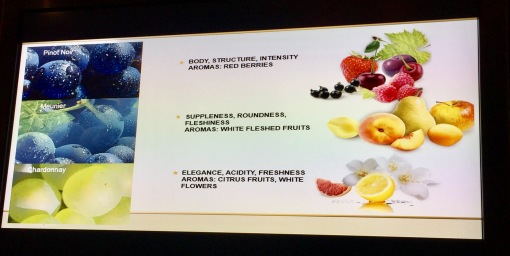
Moet & Chandon Imperial NV ($65-$70)
This is the workhorse Champagne of Moet’s portfolio, made from roughly equal proportions of Pinot Noir and Pinot Meunier, with a slightly lower percentage of Chardonnay. A non-vintage wine like most Champagnes, it blends together current-harvest wines with reserve wines that are between 1-3 years old to try to replicate the house style on a consistent, annual basis. All Champagnes have to see a minimum of 15 months of aging on the lees after the in-bottle secondary fermentation that creates its bubbles; the Imperial NV sees at least 24. It was a pale lemon colour in the glass, with active bubbles and a rich, lush nose of apple, butterscotch, anise and currant. This aromatic generosity turns taut and crisp in a hurry on the palate, the searing bubbles making the Imperial come across much drier and leaner than its nose would suggest, but a textural fleshiness remains, carrying red apple and pear fruit laced with rhubarb, quartz and yeasty parchment flavours. Rivers of acidity sing on the finish. A rock solid base for a brand.
91-92+ points
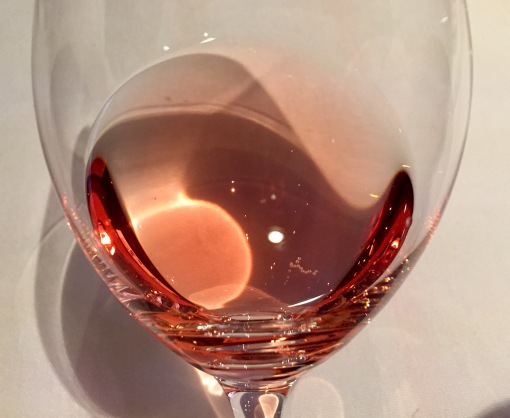
Check out this colour!! Red + white = pink.
Moet & Chandon Imperial Rose NV ($75-$80)
Champagne is the only region in France that’s allowed to make rose the way that most laypeople would assume it gets made: by simply mixing together red wine and white wine. That may be the reason behind the vivid, electric, nearly flamingo-pink colour of these bubbles, a standout in an ocean of acid-washed faded pink sparklers. Perhaps trying to live up to its hue, the nose is surprisingly primary for a traditional-method wine, mixing fresh cranberry, pink grapefruit and tart cherry fruit with a swirl of florals. The yeasty impact picks up once the wine hits the tongue, backing the fruit off to hints of citrus/pink lemonade behind waves of pepper, toast, mint, roses and oatmeal. This seems more rugged and less polished than the Imperial NV, with added textural roughness (not in an unpleasant way) and a more assertive presence.
89-90 points
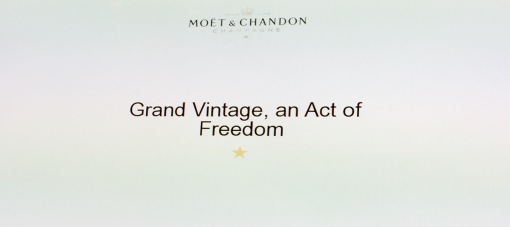
Moet & Chandon 2008 Grand Vintage ($90-$95)
Vintage Champagne can be a near-religious experience, as it is a mirror of the time and care required to make every bottle in a heralded vintage. This one spent SEVEN YEARS aging on the lees before disgorgment, and further maturation time before it hit the shelf, and yet it doesn’t betray a hint of that age in its pale, creamy golden colour or its lilting aromas of apple-cinnamon, nutmeg, lemongrass, brioche and fresh leaves. This is an explosively rich and powerful wine, with raging rapids of flavour, precise yet extraordinarily expansive. The flavours are reductive and smoky right now, green apple and lime buried under an avalanche of gravel, brine, pastry crust and elastic bands. If this were almost any other wine I would remark on the tremendous acidity before anything else, but it emerges only as an afterthought here due to the remarkable depth of all the other synchronized flavours and components in the bottle. The finish goes on forever, as will my praise for this bottle if I don’t restrain myself. Killer.
93-94 points
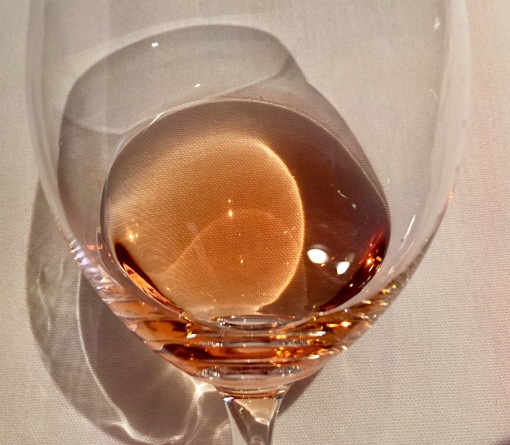
Compare to the other rose colour above – 15 years takes its toll.
Moet & Chandon 2002 Grand Vintage Rose ($105-$110)
This bottle was initially released to market in mid-2011, so it likely spent a similar time aging pre- and post-disgorgment as the ’08 Grand Vintage above before it hit the shelves, but it had the additional benefit of 6 further years of development before it got to us, as evidenced in its slightly orange-tinged medium salmon colour. Autolytic and dried fruit aromas of tangerine, burnt sugar, smoke and molasses were, in the case of my tasting table, unfortunately laced with a slight top note of lingering mustiness likely indicative of cork taint (which affects Champagne and other bubbles just like still wines). The wine tried to power through on the palate, still beaming out blood orange, black cherry, jasmine and white pepper, but since I don’t think I was seeing it as it was supposed to be, I’ll have to pass on any judgments.
Not Rated (Corked)
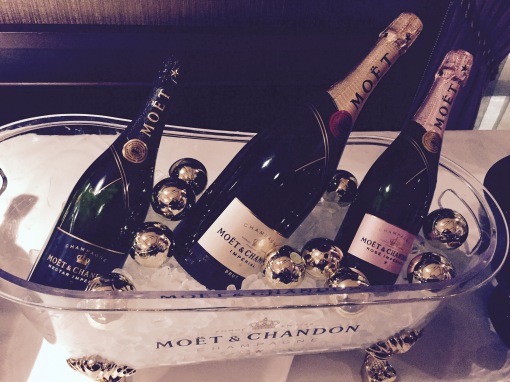
Moet & Chandon Nectar Imperial NV ($70-$75)
After four glasses of dinner Champagne (bubbles are one of the most versatile food wines out there, so don’t damn them to life as an aperitif!), the natural conclusion about what one needs next is a glass of dessert Champagne, so voila: Nectar Imperial, endowed with over 35 g/L of residual sugar, ready for your enjoyment once the main course is cleared. This was unsurprisingly richer and thicker, though still with continual bursts of tiny living bubbles. Toast, grilled lemon, candied pineapple and rubber boot aromas lead the way to softer, tamer, more generous sugar-laced flavours on the palate: lemon meringue, white peach, ginger ale, white flowers, shaved ice. Can a prestige Champagne be easy-drinking?
90-91 points
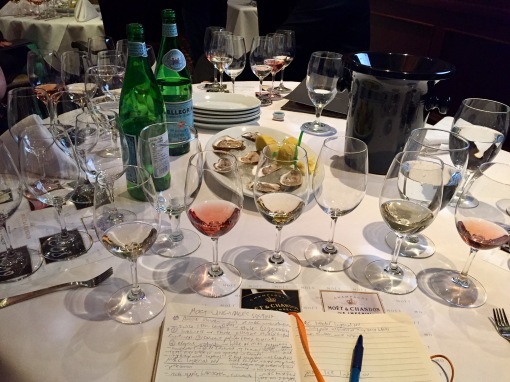
Moet & Chandon Ice Imperial NV ($80-$85)
Five of our six glasses were filled as we sat down. This one remained empty. I wondered why. Then I found out. It turns out that there is a process to be followed when drinking Ice Imperial, one given away by its name. It is the world’s first Champagne constructed and intended to be drunk…with ice cubes in the glass. Seriously. This is a real thing. At the end of our tasting, while one wine professional circulated pouring $85 Champagne into each lone awaiting glass, another followed right behind with a giant ice bucket and tongs to splash in the secret ingredient.
I have honestly never seen anything like this in the almost-universally-stuffy world of fine Champagne. It serves two purposes: to bring some fun back to this celebratory drink and take it out of the opera house and onto the patio, spreading the Moet brand to circles it might not otherwise see; and to make ingenious use of the hard pressings at the end of each grape crush, that last bit of juice requiring a little extra bit of pressure to eject from the skins. Hard pressings tend to have more “stuff” – acids, flavours, even tannin – and can come across as harsh or unbalanced if fermented and drunk on their own. Make them into bubbles on their own and you end up with sort of a Champagne concentrate, intentionally overwrought, waiting to be toned down. Drink that by itself and, in Amine Ghanem’s words, “it’s ugly.” (I wish we had gotten to try it solo. Super curious.) But add a couple of ice cubes, start some dilution, and all of a sudden you get a creamy, luscious summer Champagne, all melon and pineapple Life Savers and cream soda. It won’t replace the other Imperials at a formal tasting and it’s not supposed to, but it’s happily crushable and perfectly content with itself.
So, Amine, should we start drinking all of our Champagnes on ice? “No. Don’t do it. Don’t do it.” Good fun.
86-87+ points
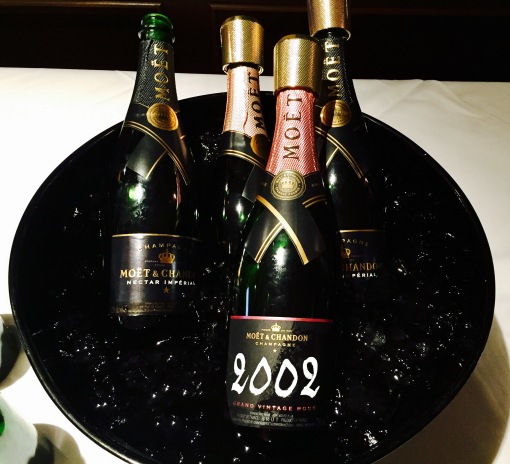


Please add me to yr email list. Thanks.
LikeLike
Hi Mary! There’s a spot on the home page where you can submit your email address to get added to the list and notified when new posts are up. Thanks!!
LikeLike